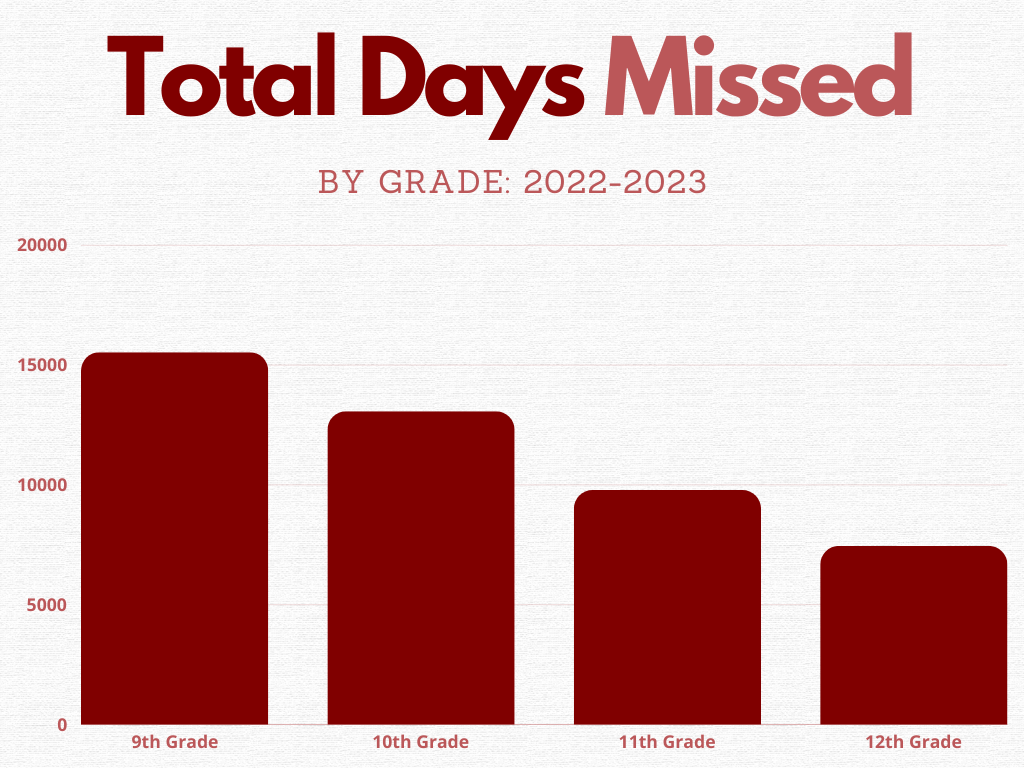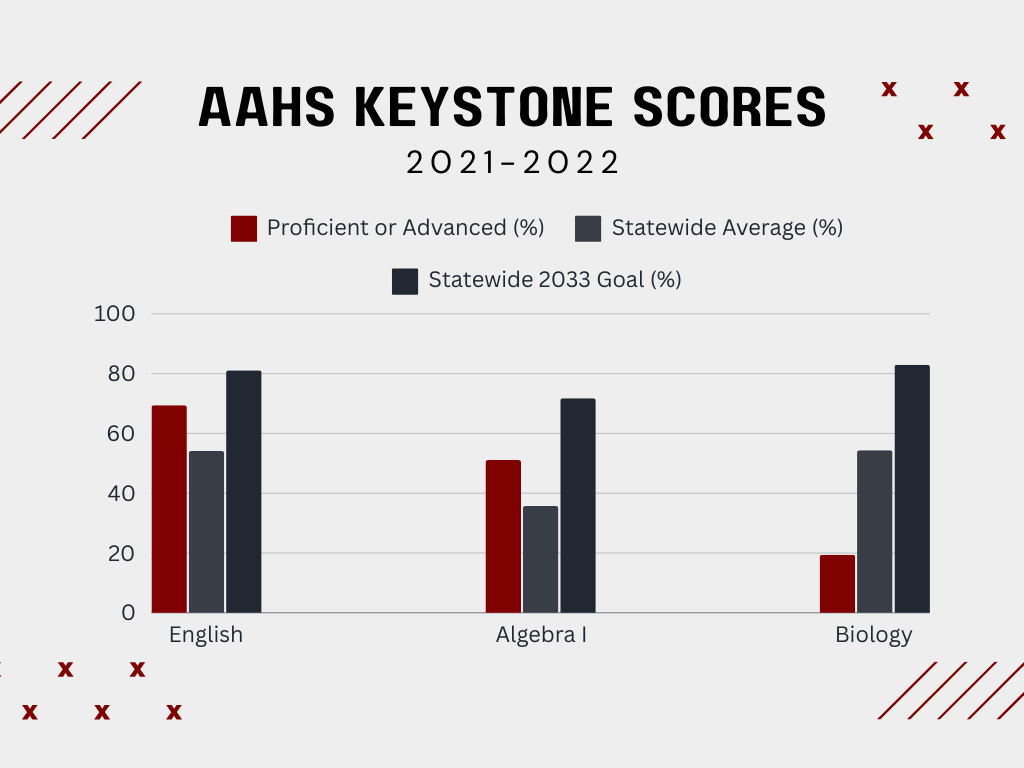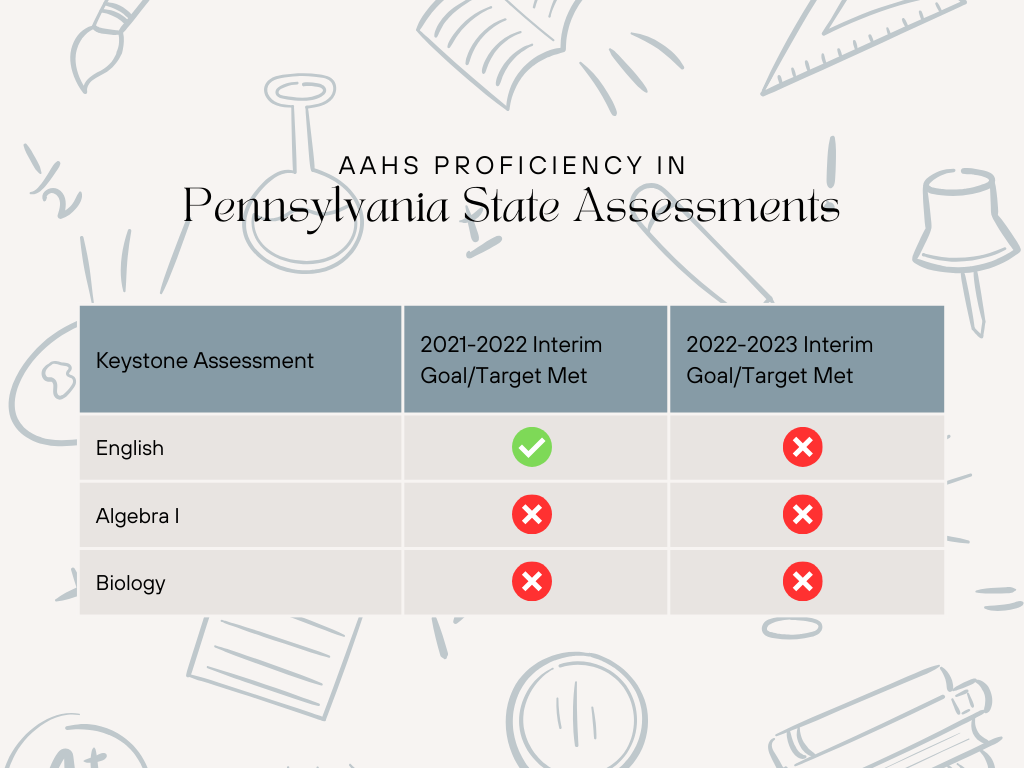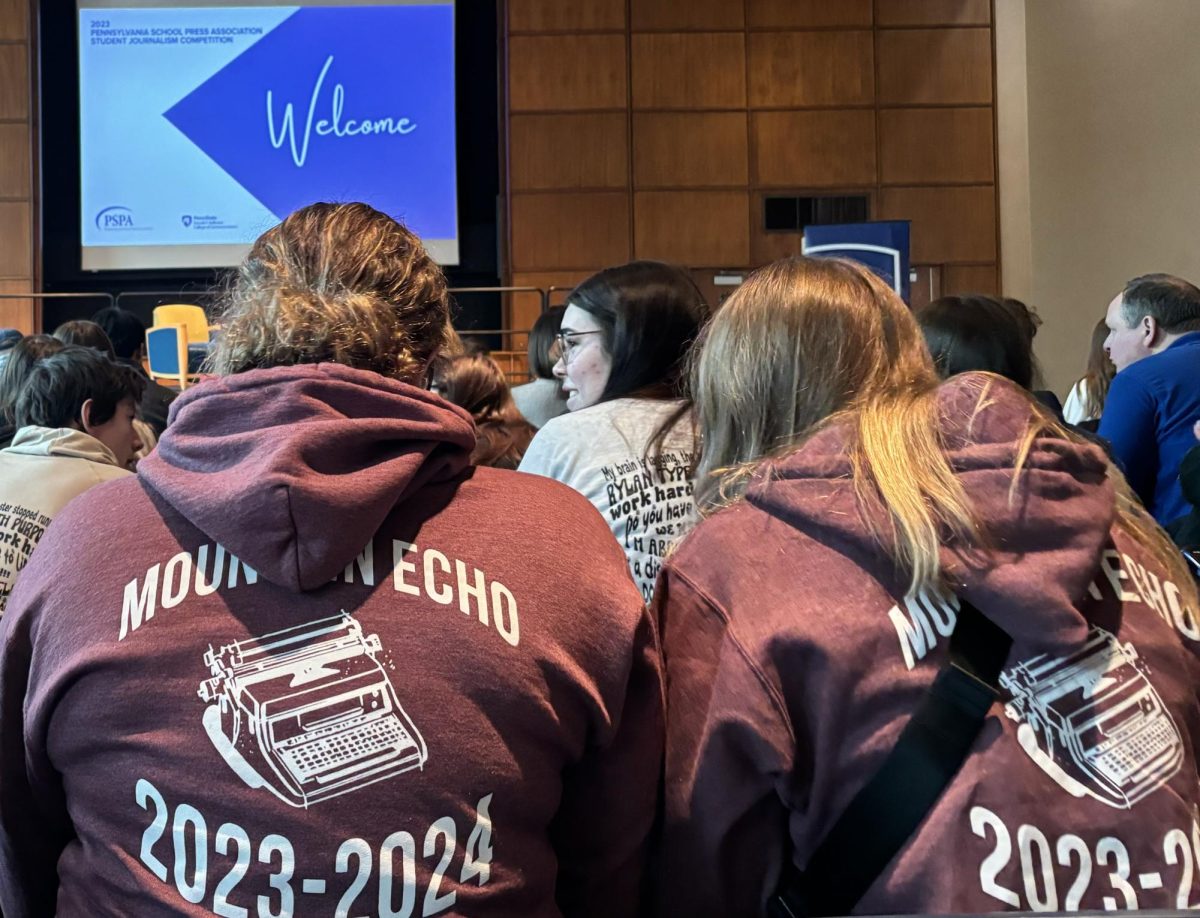TSI: Targeted Support and Intervention
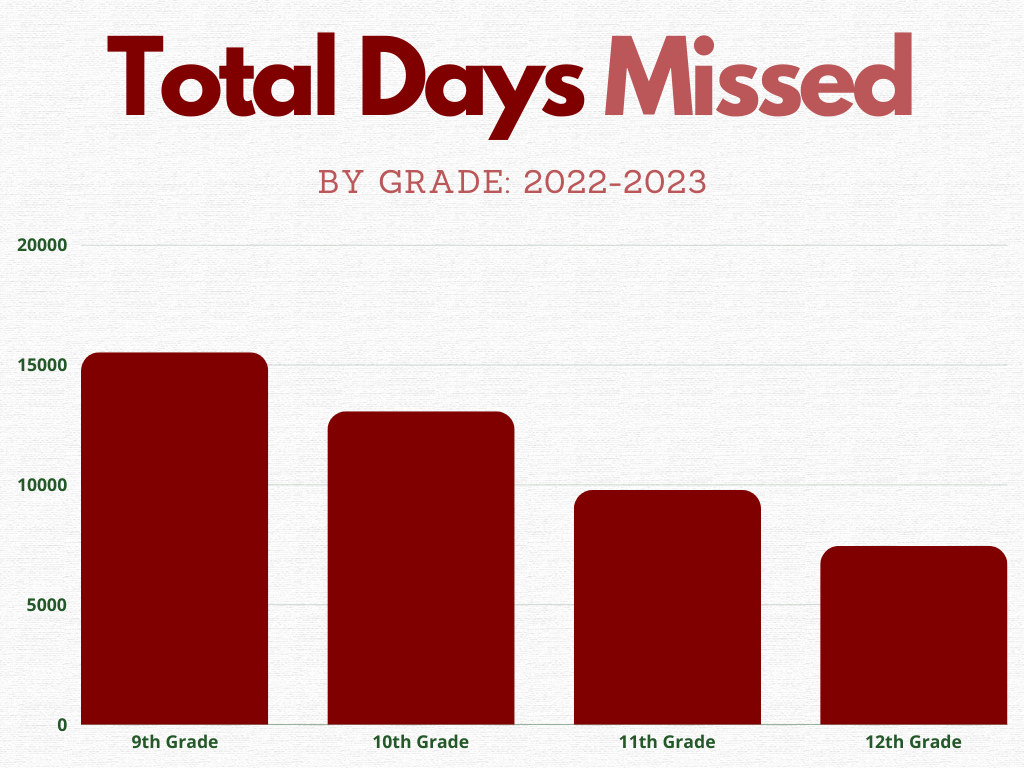
Based on the previous two school years’ attendance, state assessment results and graduation rates, Altoona Area High School was designated for targeted support and intervention (TSI).
“Our subcategories that we were behind on are our graduation rate, our attendance rate and our proficiency on Keystones. They look at the whole school, and then they look at the little subgroups and if any subgroup are below what the state says then you go into what’s called the target support and intervention,” head principal Andrew Neely said. “That’s how they are determined, and it’s based on not just last year but two years worth of information.”
“The plan in a nutshell sort of boils down to myself, the other administrators, principals, school counselors and teachers coming up with ideas that can address these areas and then implementing them,” Neely said. “That’s not where it ends, though. Then it’s a matter of measuring to see: did what we put in place have an impact? Essentially, [the state gives us a] template to make these plans. That’s where we’re kind of at, the planning stage. Now we have to have the plan in place and ready to go by next quarter. In fact, we have a meeting coming up later, in early March, where we as administrators, as school leaders, set aside a designated period of time where we’re not going to talk about anything else other than this.”
Attendance is one of the factors that affects the designation given by the state. Neely hopes to solve this issue by developing a TSI plan in upcoming meetings with staff members to be implemented next school year.
“Attendance, to me, at least, is the biggest thing that we have to solve first. If we can get kids to come on a regular basis and not miss school, then that means we’re able to maximize the time that we have as teachers to make sure kids are ready for state assessments,” Neely said. “I think it really boils down to our attendance rate where it needs to be so that we can effectively teach the material to kids.”
Since 2016, student absentee statistics were showing a promising downward trend—until COVID-19 hit.
“When we were pre-COVID, the number of kids who had six or more illegal days of absence—248—jumped up right after to 630. This is what was most shocking to a lot of us. It goes from 630 in the year we returned from COVID, the first normal year back, and then it jumps again the following year,” Neely said. “You would think there’d be a spike, and then we’d start to see a downward trend. We actually saw it go up—go the wrong direction—after coming back.”
Neely believes the virtual, asynchronous setting of online learning during COVID-19 affected students’ mindsets.
“The kids that were successful online, they felt like they knew they could get assignments and not go to school,” Neely said. “I know when I was in school, I pretty much had to be on my deathbed. My parents didn’t say ‘oh, you have a little bit of tickle in your throat and a headache, you can stay home.” But I think as a society, we basically are saying, ‘well, you know what, you can still get your stuff online, so it’s not important that you come to school’ because we all experienced what online learning is.” — Neely
“We’re constantly looking at pathways, and there’s so much more that you have to have the kids do. The counselors, Mrs. Jana and Mrs. Anderson, and myself, Mr. Neely, and Mr. Harrington are scheduling pathway meetings. We meet once every two weeks, and we have a list of which students haven’t met a pathway and just try to provide them with all the options that they have, because not everybody’s going to meet the same ones,” senior principal Vince Nedimyer said. “I really want students to know that we’re not trying to make them not graduate. Our ultimate goal is that every student that we come in contact with that comes to our school leaves here with a diploma, ready to step into whatever the next piece of their life is going to be, whether it’s college or going straight into the workforce, military, trade school, doesn’t matter. As long as we’re doing our best to prepare them.” We will never allow a student who’s trying and doing their absolute best, putting forth an effort here in school, to not have a pathway.” — Neely
“We will never allow a student who’s trying and doing their absolute best, putting forth an effort here in school, to not have a pathway,” Neely said.
A way counselors help students shape their pathway is through scheduling classes with them based on their desired job in their future.
“Well, it is very important to consider what a student is interested in to pick their classes. I definitely try, and I think all of the counselors try, to get students thinking about what they want to do and try to find classes that will expose them more to those areas of interest,” junior counselor Eileen Starr said. “I think it’s very, very important for somebody that thinks they want to go into business, to experience business classes and anything that we have that could give students a taste of what they might be spending a lot more time and money doing later on. I think it’s a really good thing.”
The TSI designation is also based on state assessment scores.
“[The Future Ready PA Index] has all this data on students on how you did in reading, how students did in math and science. They make predictions and say, ‘Well, if this kid scored, they’ve always been proficient and they’ve scored at this level, we predict that when they take the Biology Keystone exam, they’re going to score at this point.’ So then, if you score higher than that, that’s a good thing. That means that we pushed you beyond what they were predicting. Now if you score below, that means that if you went backward, you regress, and so they measure that,” Neely said.
The Keystone exam is one of the academic indicators. Students take the Algebra I and Biology exams when they have completed or are completing those courses in school, and their English and Literature Keystone is in tenth grade.
“When students have not scored proficient in one of the [Keystone] areas or more than one of the areas, we have been able to offer some skills refresher classes, so it’s a half-year class for a half credit. There aren’t too many students that seem to be very happy about taking that because sometimes it bumps out something else that they want to take, but it’s at least an effort to try to help them review some really essential skills,” Starr said.
The TSI plan will create an adjustment in classroom settings, but won’t completely alter the content or structure of subject curricula.
“I don’t think [the plan is] going to change the setting of curriculum and classrooms a ton. I think it’s looking for different strategies for where the points of interest are and how we can focus differently and work with teachers on different strategies that they can try to use within their classrooms. You’re not going to see an upheaval of the entire curriculum or anything like that,” Nedimyer said.
As part of TSI, the state requires that schools have to advertise and let their community know of this plan. This will be done through the school’s mailing, emailing and social media outlets.
“The Leader in Me program was put into place but not because of the TSI designation,” Neely said. “The Leader in Me Program is a program that is being implemented across the entire school district all the way down to preschool. It’s at a different level for the elementary kids than it is for you guys. But it is essentially a program a lot of people refer to as what’s called character education. The idea behind it is you take the seven habits that Sean Covey put into place. If you do the things and if you adhere to the seven habits that it is all about you’re going to have a better attendance rate. You’re going to focus your time when you’re here on the aggregate of your academics and make sure that you’re progressing and doing well. So in a roundabout way, it is definitely going to support what we’re doing with TSI, but it’s not specifically put into place to address the plan.”
Besides the Leader in Me program, teachers and staff are looking for ways to encourage students to come to school.
“I think first and foremost, my job and everyone else’s job, either administrator, teachers, or any of the positions where adults are here, we need to be thinking about ways in which we can entice and influence students to come in regularly to school,” Nedimyer said. There is a lot of living left to do after you graduate.” — Neely
“That’s why we are what we are, that’s why we got into this business. That’s why Mr. Nedimyer became a teacher. That’s why I became a teacher and why counselors became counselors, because we thought there was a way we could lead people, and help make sure that the students are all at that same level and get a diploma to help them on the next step in their lives,” Neely said.
Altoona, PA 16602



